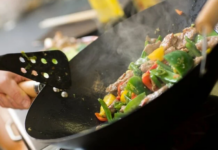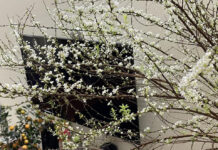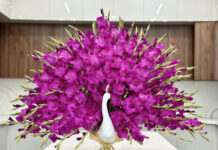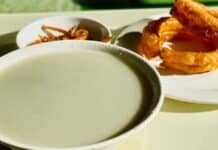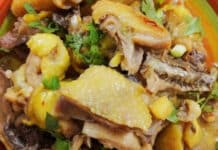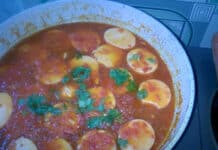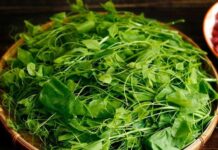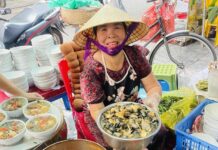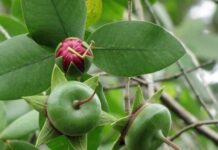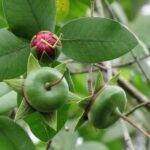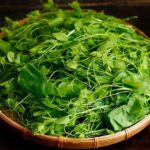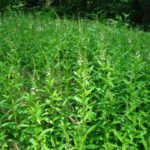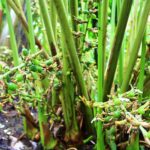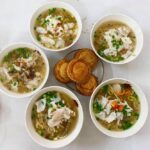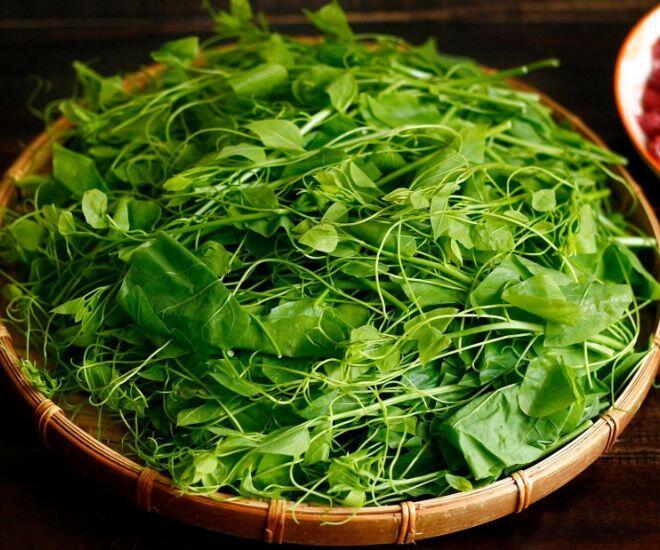
Bò khai, a climbing plant native to the rocky mountains of Cao Bằng, Bắc Kạn, and Lạng Sơn provinces, is a culinary treasure cherished by locals. Its tender shoots and young leaves are harvested to create a variety of dishes, including stir-fries, soups, and boiled preparations. Resembling the shape of mallow leaves, bò khai stands out with its plump, rounded tips akin to those of chayote. In the cuisine of the highlands, this vegetable is celebrated for its unique flavor, unmatched by any other.
The most intriguing aspect of bò khai is its distinct “earthy” aroma, true to its name. Before cooking, the leaves are typically massaged to mellow the scent, yet a subtle essence lingers, making it unforgettable. Locals swear by stir-frying as the best method, especially with garlic or beef. Boiling or soup-making often diminishes its crispness and aroma, making stir-fries the preferred choice.

Two varieties exist: white and red bò khai. The white variety is more common and widely cultivated, while the red is rarer but prized for its richer, sweeter flavor. During the forest vegetable season, bò khai is a top choice for its taste, purity, and nutritional value.
Beyond its culinary appeal, bò khai has long been used in traditional medicine. Mountain communities use its leaves, stems, and branches to treat kidney stones and viral hepatitis. The preparation is simple: boil the plant parts in water, using either fresh or dried ingredients. It’s also believed to rejuvenate those suffering from fatigue or loss of appetite. A bowl of hot bò khai soup or a decoction is thought to enhance vitality and appetite. Notably, raw or minimally processed bò khai is considered more potent in its medicinal properties.

Recognizing its economic potential, six households in Cao Bằng village formed a cooperative in 2017 to cultivate bò khai. By 2020, this grew into the Cao Bằng Agricultural Service Cooperative with 13 core members, expanding to 21 members and 20 associates, farming over 40 hectares. This marks a significant step in establishing bò khai as a key agricultural product for the region.
According to the cooperative, yield varies by season. During colder months, production decreases, but prices rise. Monthly, the cooperative harvests about 2 tons of fresh bò khai, priced at approximately 60,000 VND/kg—a premium compared to ordinary vegetables, reflecting its high demand and economic value.
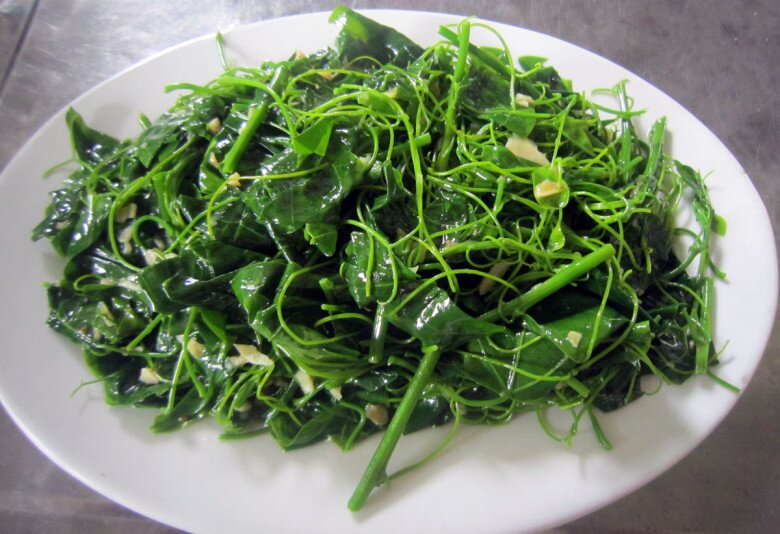
Bò khai is now exported abroad, thanks to standardized farming, harvesting, and preservation practices. This not only opens new markets for highland produce but also showcases Vietnam’s unique culinary heritage. In cities like Hanoi, bò khai is increasingly available in specialty stores and clean food markets, though it remains scarce in traditional markets due to limited supply. Its growing popularity has led restaurants, especially those featuring highland cuisine, to highlight dishes like garlic stir-fried bò khai and beef stir-fried bò khai, captivating diners with its distinctive flavor.
From a humble mountain vegetable, bò khai has risen to become a cherished highland specialty, beloved both domestically and internationally. It not only boosts income for mountain communities but also celebrates the rich flavors of Vietnam’s countryside, where nature and tradition converge to create culinary masterpieces.
“The Humble Fruit with a ‘Poor’ Name: A Hidden Gem of the Mekong Delta, Perfect for Any Dish”
Not only renowned as the nation’s “rice granary,” the Mekong Delta also boasts a rich culinary treasure trove filled with rustic, locally sourced delights. Among these, the water apple stands out as a fruit both familiar and unique, deeply intertwined with the daily lives of the region’s inhabitants.
The World’s Most Expensive Fruit: Vietnam’s Abundant Harvest of a Renowned Delicacy, Fetching $52 per Kilogram
Nestled in the rugged terrains of Northern Vietnam’s mountainous provinces, the world’s most coveted spice is flourishing. This rare and luxurious ingredient, once a well-kept secret, is now poised to become Vietnam’s next major export sensation. Its unparalleled quality and exclusivity make it a treasure sought after by connoisseurs worldwide.







